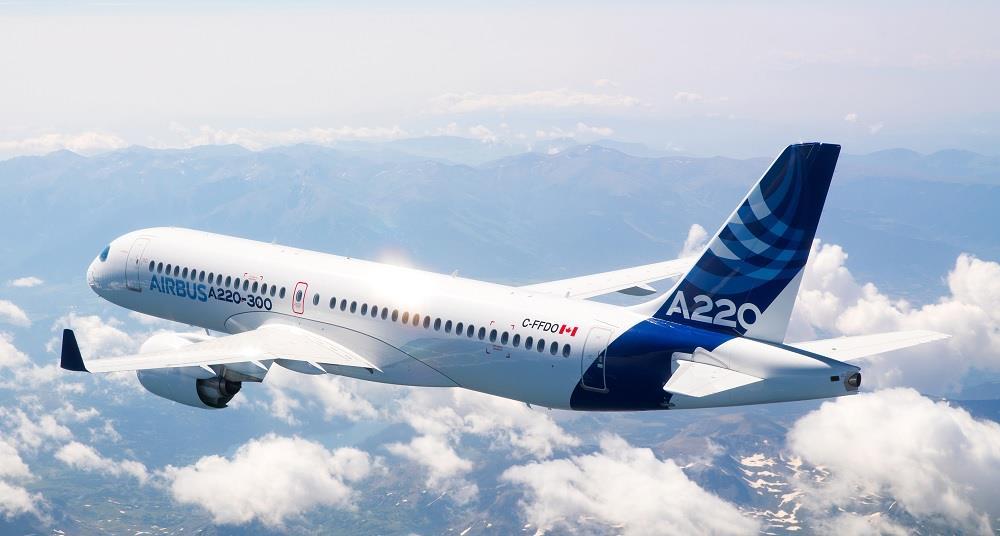EASA proposes to mandate take-off performance monitoring on new-build aircraft
Company
Legal Links
Contact
- +44 7947 753363
- contact@skylineairporttransfers.co.uk
- 6 Walsall Street Bilston Wolverhampton WV14 0AT
Recent Posts
© Skyline Airport Transfers. Created by![]() Beaphoenix WebDesign ltd
Beaphoenix WebDesign ltd
Popular Locations:
Birmingham: Aston, Bournville, Edgbaston, Erdington, Great Barr, Hall Green, Handsworth, Harborne, Northfield, Quinton, Soho, Sutton Coldfield, Amblecote, Brierley Hill, Coseley, Cradley, Gornal, Halesowen, Kingswinford, Lye, Netherton, Sedgley, Stourbridge, Quarry Bank, Bearwood, Blackheath, Cradley Heath, Great Bridge, Old Hill, Rowley Regis, Smethwick, Tipton, Tividale, Wednesbury, West Bromwich, Balsall Common, Bickenhill, Castle Bromwich, Chelmsley Wood, Dorridge, Elmdon, Hampton in Arden, Kingshurst, Knowle, Marston Green, Meriden, Monkspath, Hockley Heath, Shirley, Aldridge, Birchills, Bloxwich, Brownhills, Darlaston, Leamore, Palfrey, Pelsall, Pheasey, Shelfield, Streetly, Willenhall, Bilston, Blakenhall, Bushbury, Compton, Ettingshall, Heath Town, Oxley, Penn, Tettenhall, Wednesfield, Burntwood, Lichfield, Cannock, Rugeley, KIDDERMINSTER, Brierly Hill,
STOURPORT-ON-SEVERN
Coventry: Allesley, Binley, Keresley, Stoke, Tile Hill
Leicester: Abbey Rise, Ashton Green, Aylestone, Beaumont Leys, Bede Island, Belgrave, Blackfriars, Braunstone, Braunstone Frith, Bradgate Heights, Clarendon Park, Crown Hills, Dane Hills, Evington, Evington Valley, Eyres Monsell, Frog Island, Goodwood, Hamilton, Highfields, Horston Hill, Humberstone, Humberstone Garden, Kirby Frith, Knighton, Mowmacre Hill, Netherhall, Newfoundpool, New Parks, North Evington, Northfields, Rowlatts Hill, Rowley Fields, Rushey Mead, Saffron, Southfields, South Knighton, Spinney Hills, Stocking Farm, Stoneygate, St. Matthew’s, St. Mark’s, St. Peters, Thurnby Lodge, West End, West Knighton, Western Park, Woodgate
Derby: Matlock, Ripley, Ashbourne, ILKESTON, SWADLINCOTE , BURTON-ON-TRENT, BAKEWELL,
ALFRETON, BELPER, HEANOR
Telford: Market Drayton, Newport, Shifnal, Broseley, Much Wenlock
Stoke: Stoke-on-Trent, Newcastle, Leek, Uttoxeter, Stone, Stafford
Worcester: Worcester, Droitwich, Pershore, Broadway, Evesham, Malvern, Tenbury Wells
Gloucester: Gloucester, Cheltenham, Stroud, Cirencester, Tewkesbury, Badminton, Berkeley, Blakeney, Chipping Campden, Cinderford, Coleford, Drybrook, Dursley, Dymock, Fairford, Lechlade, Longhope, LydbrookLydney, Mitcheldean, Moreton-in-Marsh, Newent, Newnham, Ruardean, Stonehouse, Tetbury, Westbury-on-Severn, Wotton-under-Edge.
Nottingham: Nottingham, Sutton-in-Ashfield, Mansfield, Newark, Southwell, Grantham, Sleaford
Leicester: Leicester, Hinckley, Loughborough, Melton Mowbray, Oakham Market, Harborough, Lutterworth, Wigston, Ashby-de-la-Zouch, Ibstock, Markfield
Oxford: Oxford, Kidlington, Chipping Norton, Thame, Wallingford, Didcot, Wantage, Abingdon, Banbury, Carterton, Woodstock, Bicester, Witney, Chinnor, Watlington
Chester: Chester, Deeside, Bagillt, Buckley, Holywell, Birkenhead, Preston, Wallasey, Wirral, Neston, Ellesmere Port, Prenton
Airports we serve:
BHX: Birmingham Airport
EMA: East Midlands Airport
LHR: London Heathrow Airport
MAN: Manchester Airport
LGW: London Gatwick Airport
LTN: London Luton Airport
SOU: Southampton Airport
BRS: Bristol Airport
LPL: Liverpool John Lennon Airport
LCY: London City Airport
STN: London Stansted Airport



Certain transport aircraft will be required to carry a take-off performance monitoring system to reduce the persistent risk of data-entry and calculation errors, under a new proposal from the European Union Aviation Safety Agency.
The proposed mandate would only apply to new-build aircraft and would be unlikely to take effect until around 2033.
EASA’s measure is being driven by the long-standing threat posed by undetected deviation from expected take-off performance – a situation which can result from incorrect take-off parameters, using the wrong runway intersection, or misconfiguring the aircraft based on erroneous weight-and-balance data.
The proposed monitoring system would use three functions – designated F1, F2 and F3 – to detect problems and alert the crew.
EASA says the F1 function would check errors in take-off parameters, such as inputs to the flight-management system, while F2 would check the aircraft’s position at the beginning of the take-off run. The third function, F3, would provide real-time monitoring of take-off performance.
While the installation mandate for functions F1 and F2 would apply to all transport aircraft, the F3 function would only be required for large models – exempting smaller business jets and regional turboprops.
EASA justifies this preferred option by pointing out that the F3 function, real-time monitoring, is the “most complex and most expensive” of the three to implement.
While mandating all three functions could prevent 89% of potential future occurrences involving new aircraft designs, EASA says an analysis of previous incidents and accidents shows none involving smaller aircraft which would have been mitigated by the F3 function, but not by F1 or F2.
It says F3 offers “very limited benefits” for turboprops and executive jets – although business aircraft based on larger airliners would not be excluded.
EASA studied 118 occurrences worldwide spanning 1998-2023, which included 18 accidents – of which five were fatal – and 74 serious incidents.
While a retrofit of in-service aircraft is not being considered, the EASA proposal would apply to new-build airframes of already-certified aircraft types as well as new designs.
This would effectively double the number of compliant aircraft in the global fleet by 2058, some 25 years after implementation.
EASA is inviting comments on its proposals, setting a submission deadline of 3 October.
Source link
Share This:
admin
Plan the perfect NYC Memorial Day weekend
Pack only what you need and avoid overpacking to streamline the check-in and security screening…
LA’s worst traffic areas and how to avoid them
Consider using alternative routes, such as Sepulveda Boulevard, which runs parallel to the 405 in…
Italy lines up follow-on order for 29 AW249 Fenice attack helicopters in €1.22 billion deal
Italy has begun the process of contracting a third batch of Leonardo AW249 Fenice attack…
Airbus trims A220 production targets over supply and demand considerations
Airbus has lowered its target for A220 production rates, aiming for 12 aircraft per month…
Airbus halves number of parked ‘gliders’ as it strives to meet year-end delivery target
Airbus has halved, the last three months, the number of engineless aircraft for which it…
GE Aerospace WZL-2 Poland F110 engine maintenance F-15EX fighter MoU partnership
GE Aerospace and Poland’s WZL-2 will explore the possibility of local maintenance, repair and overhaul…
Lufthansa Group confident in stronger full year as passenger and cargo divisions improve
Lufthansa Group is confirming a stronger full-year outlook, as the company posted its strongest-ever quarterly…
Nouvelair A320 may have overflown EasyJet aircraft by less than 10ft during wrong-runway landing
French investigators have revealed that a Nouvelair Airbus A320 may have passed less than 10ft…
Avia Solutions divests SmartLynx’s Latvian arm and plans to consolidate other European divisions
Wet-lease specialist Avia Solutions Group has sold its Latvian division of SmartLynx and aims to…
Icelandair brings forward Boeing 767 fleet retirement to 2026 amid ‘unsustainable losses’
Icelandair will end widebody operations in 2026, after bringing forward the timeline for phasing out…
France outlines plans to order 52 more Dassault Rafale fighters from 2027 onwards in budget expansion
France could significantly expand its future commitments for the Dassault Aviation Rafale fighter, having disclosed…
Hybrid Air Vehicles locks in ‘innovative defence contractor’ as customer for three Airlander 10 hybrid airships
An undisclosed customer has secured reservations for three Hybrid Air Vehicles (HAV)-produced Airlander 10 aircraft…